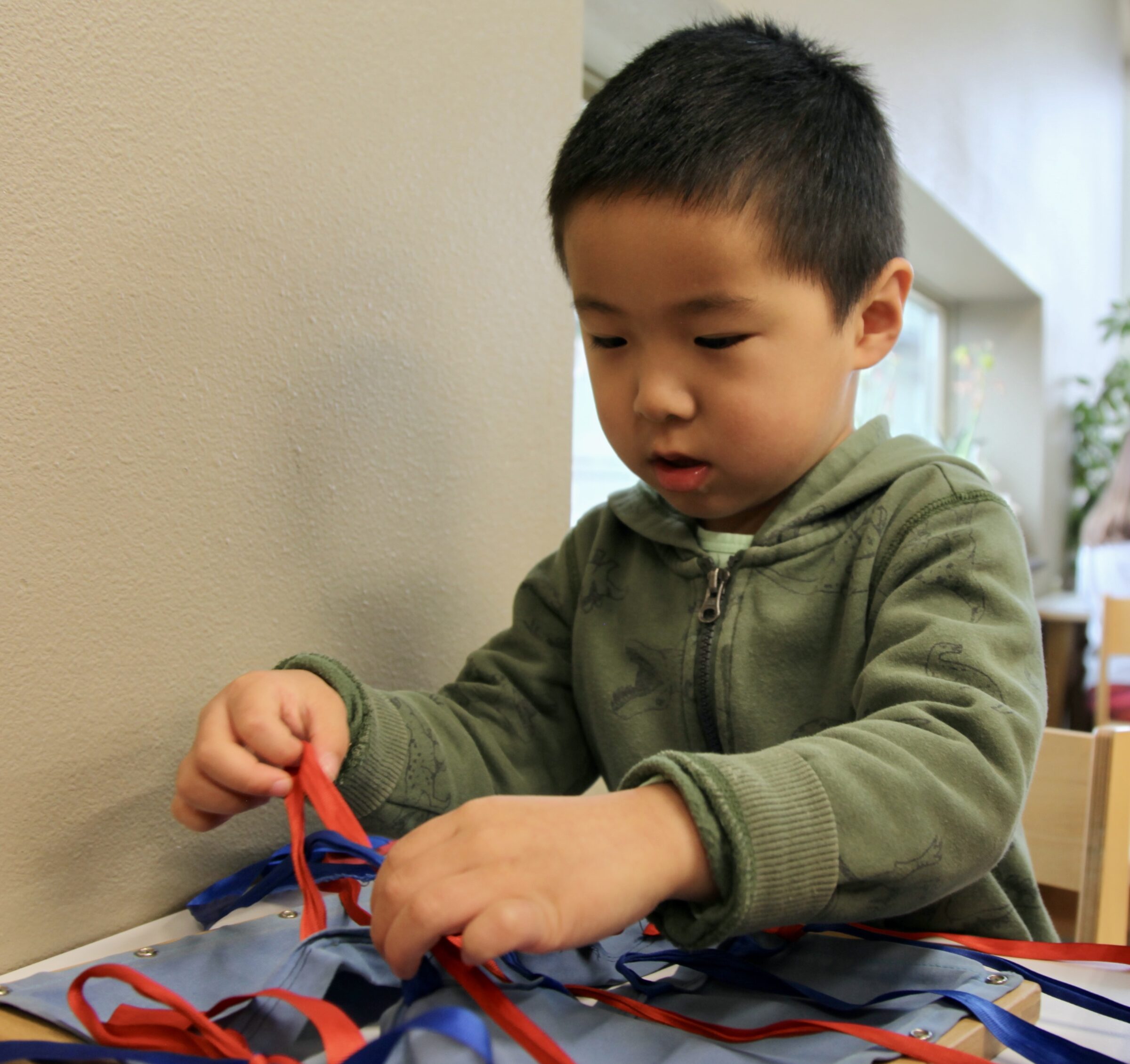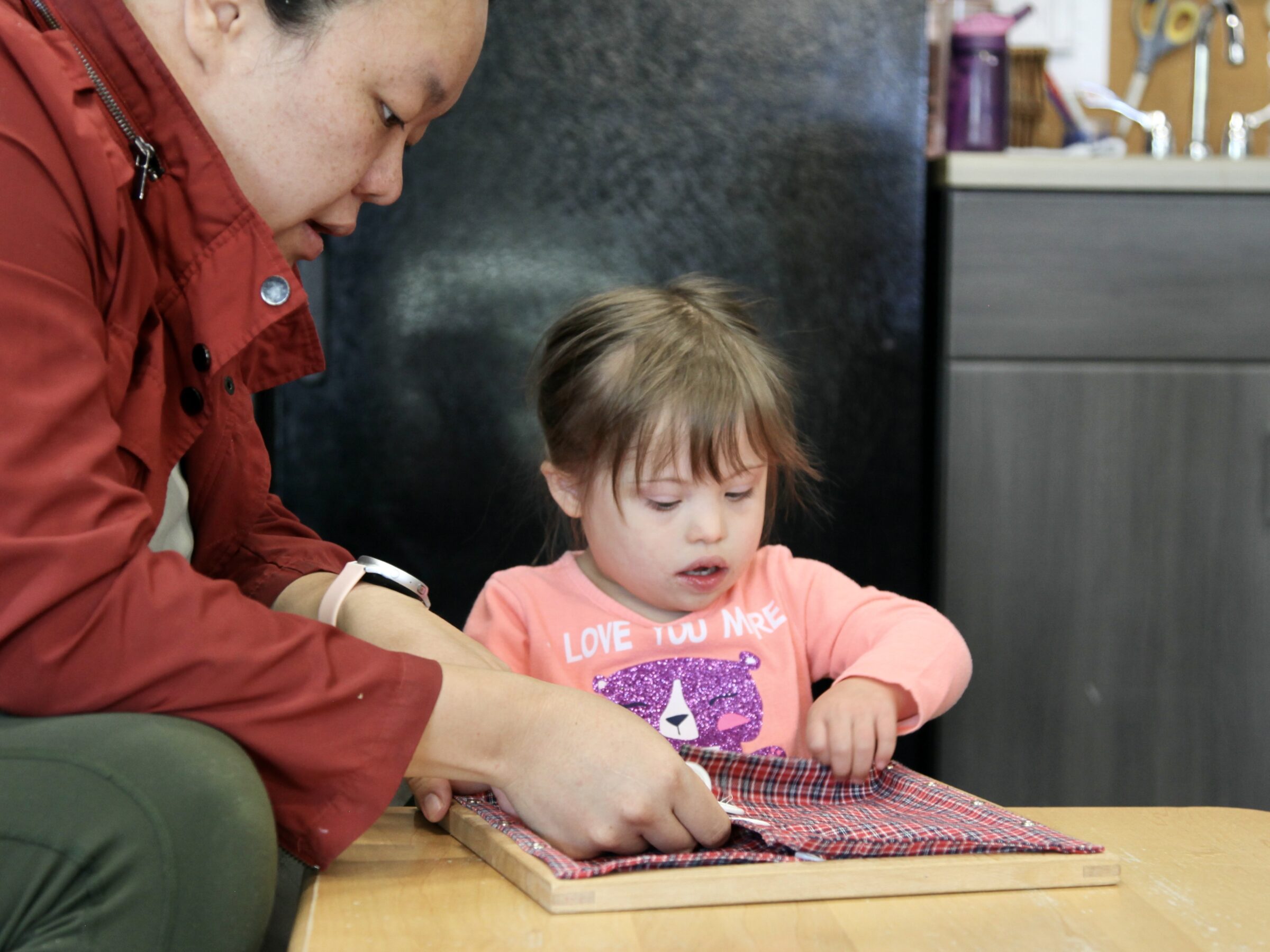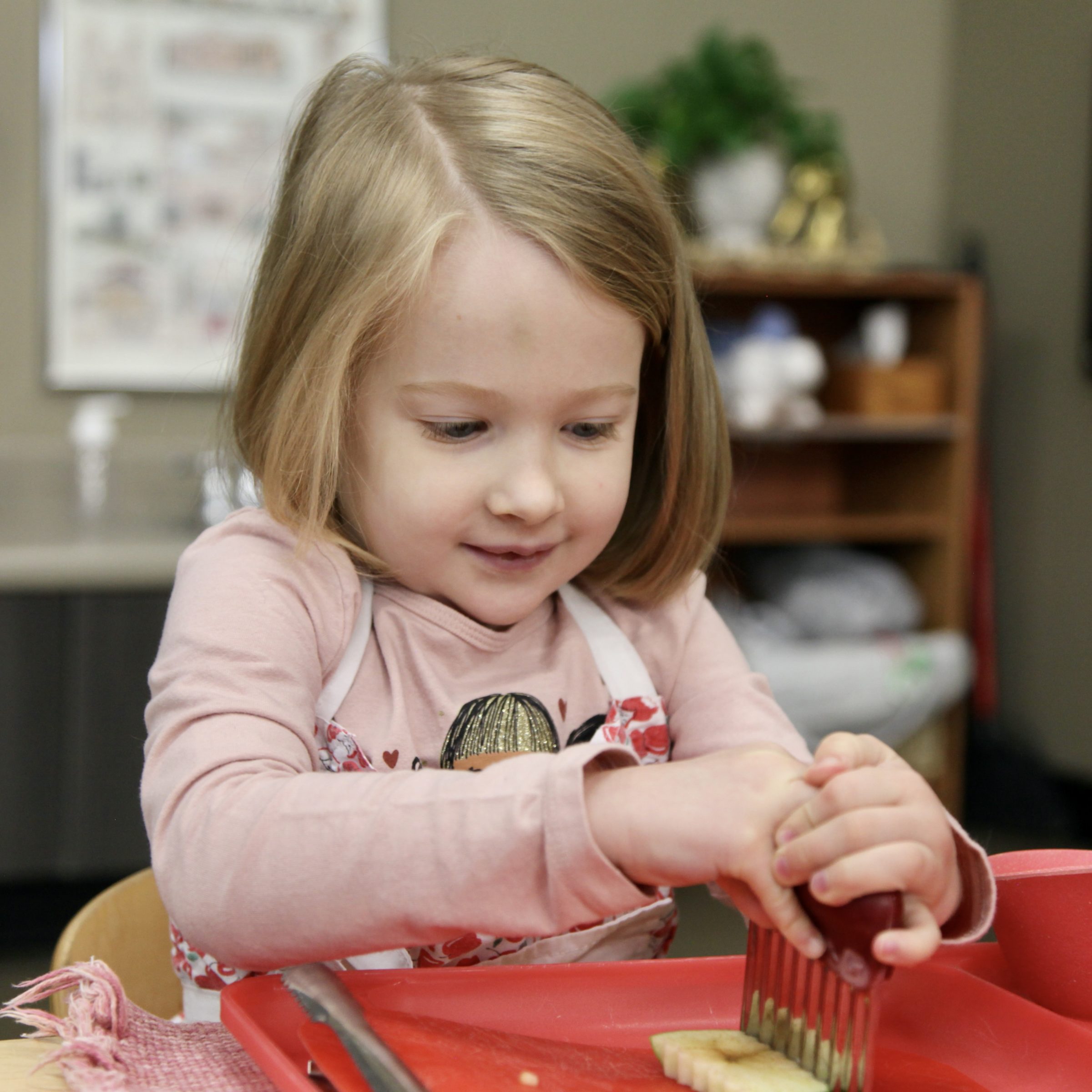The Montessori Three Period Lesson
Dictionary
There’s a tool we use almost constantly in the classroom. In fact, we all use it, all the time! It’s something called a Three Period Lesson, and it’s essentially how we all learn language.
There are three different periods, or stages.
First, we Name something.
Second, we Recognize it.
Third, we Identify it.
In the classroom, it’s how we present a child with new vocabulary. For instance, once a child has mastered building the Pink Tower or pairing Color Tablets, we’ll introduce appropriate language — large and small, red, yellow, blue, etc.
We introduce Sandpaper Letters this way. Let’s think of things that start with “mmm.” Mmmmom, mmmmusic, mmmmath… this is “mmm.” We’ll show the child the letter, as well as how to trace it. (We use sounds rather than letter names when beginning literacy with a young child. This post outlines the Montessori path to literacy, and this one is all about Sandpaper Letters.)
This is the “naming” stage, the first stage.

Then, we’ll play a game. Touch red. Trace t. Give me a larger cube.
It’s natural to make mistakes. A child is still learning! That one is i; this is f. Trace f. Oh, this one is smaller, can you bring me one that is larger? Lovely, you did it! This is the recognizing stage, the second stage.
Finally, what’s this? Yep, pink! What’s this? You’re right, that is an acute-angled isosceles triangle. Now this language belongs to the child.
We don’t need an official time, to sit down together to learn vocabulary. Children are constantly using new vocabulary, and they’re using these same steps to learn new words.
We talk about things all the time with and around children, and they’re constantly absorbing everything we say. They’re using contextual clues to put the mystery together. “Could you please pass the salt?” Okay, the other person picks up that thing, hands it over. Got it — that’s salt. “It’s time for bed!” We walk to this room together. Got it — this is bed. This is that naming stage, except rather than just a few pieces of language, specialized around a certain quality or subject, a child is attaching meaning to everything, all the time. Woah.

Again, we play a game, but we don’t always realize that’s what we’re doing. “It’s time for bed!” and a toddler walks to the bedroom. “Where’s your milk?” perhaps asked rhetorically, and they gesture to a fallen sippy cup. This is when we can sometimes be surprised that a child is making connections, has attached to language we didn’t realize they knew.
Finally, there’s “use.” Babbling or actual words to talk to or about an object, person, quality.
“Go to mama” again and again and again quickly leads to outstretched arms to the proper adult, and after what might be a million years, the sweetest “mama” ears have ever heard. We figure out pretty quickly that getting the right sounds in the right order gets us what we want, whether it’s glee from our favorite people or a sought-after object.
This lasts far beyond toddlerhood. As long as we’re learning language, we’re hearing new words, we’re using the skills at our disposal to attach meaning, whether that be contextual clues or a quick internet search, and then we’re using those words. If it’s water or help, or chemistry vocabulary, or required occupational jargon, or a different language than the one we grew up using, these three stages are constantly being used, at every stage of our lives.
It’s not a Montessori invention, merely a Montessori name and a classroom tool for a very human experience.
Written by:
Charlotte Snyder



